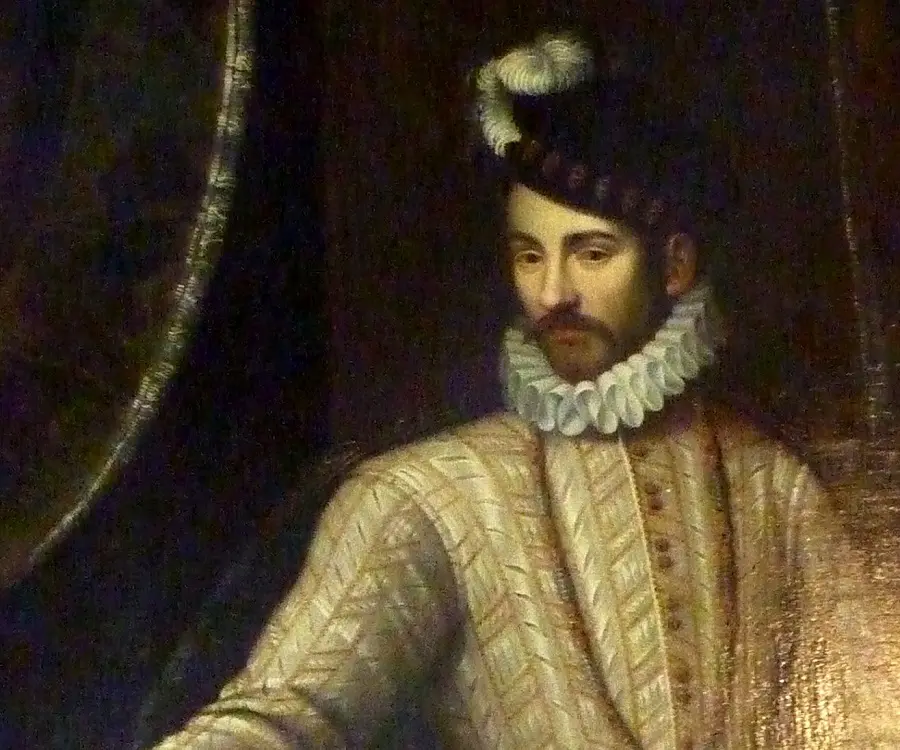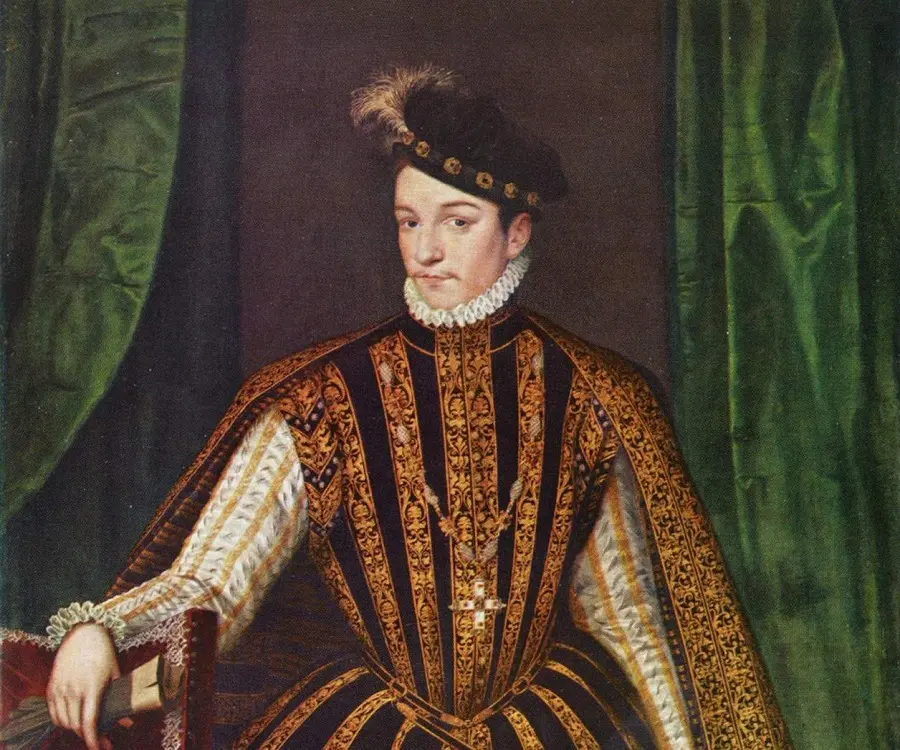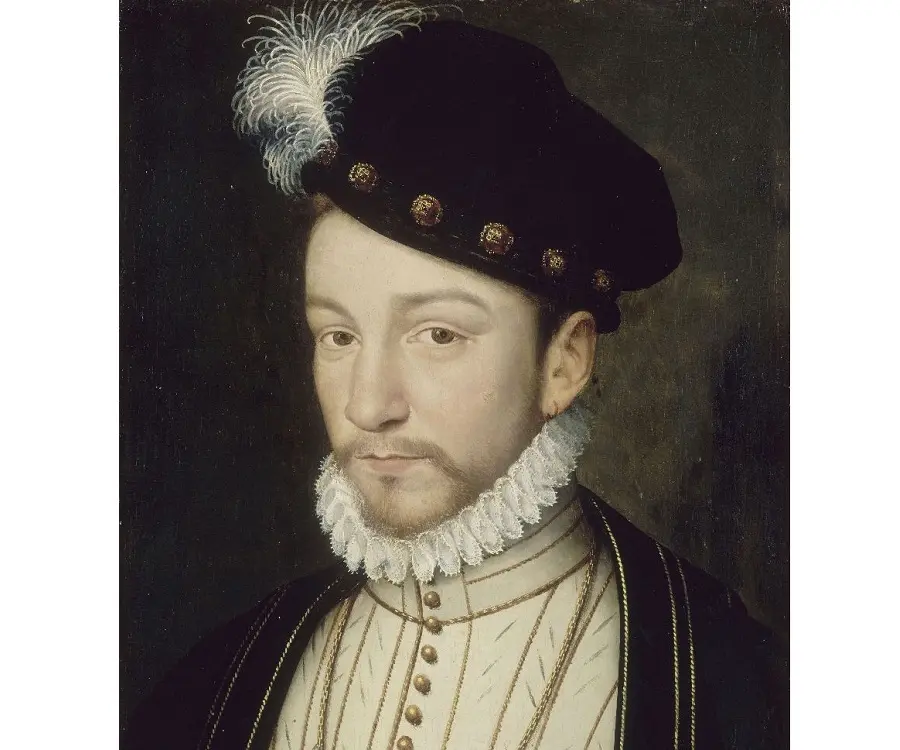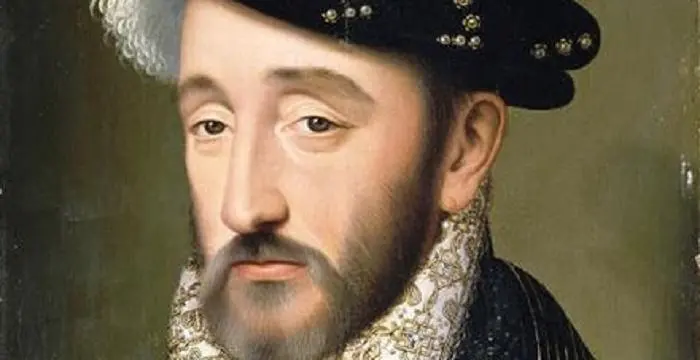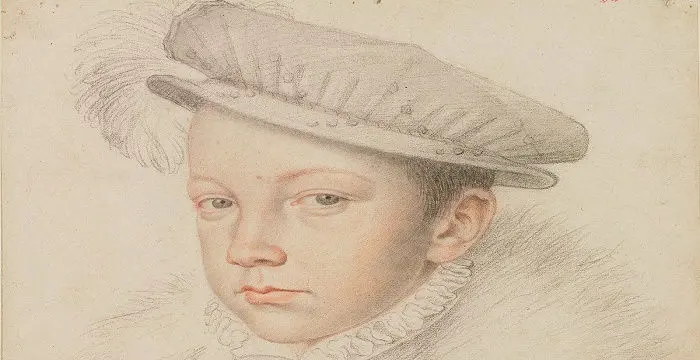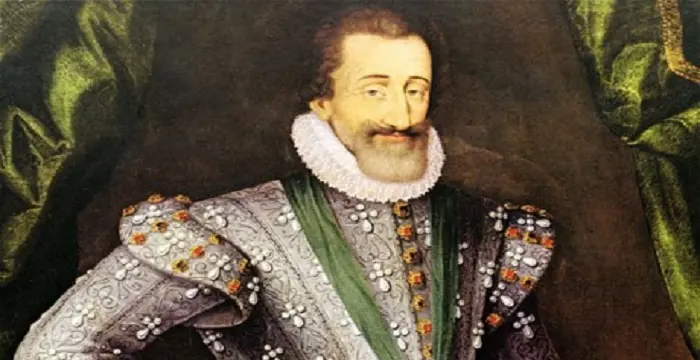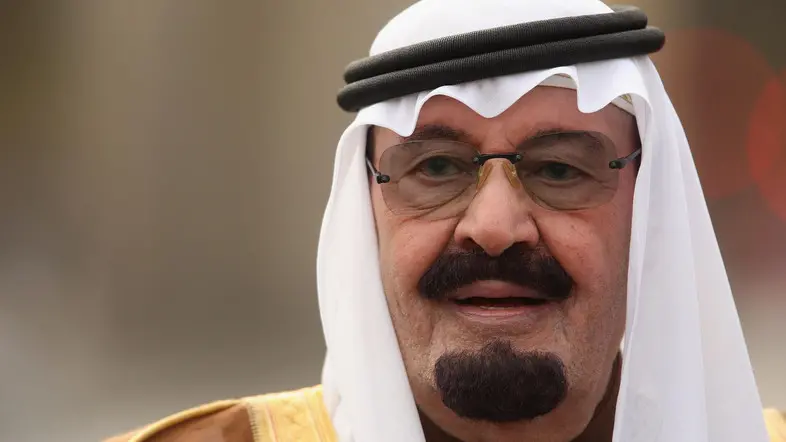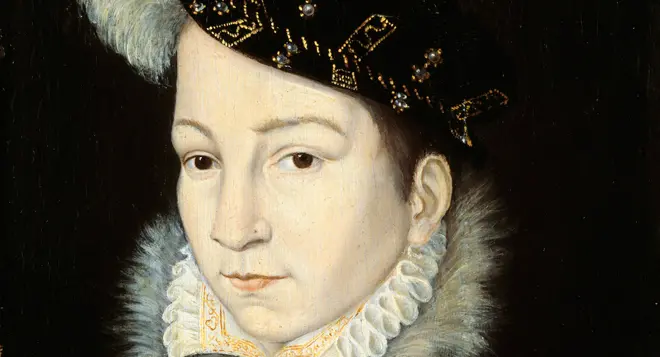
Charles IX - King of France, Timeline and Family
Charles IX's Personal Details
Charles IX was a French King
| Information | Detail |
|---|---|
| Birthday | June 27, 1550 |
| Died on | May 30, 1574 |
| Nationality | French |
| Famous | Historical Personalities, Emperors & Kings, Leaders, Emperors, King of France, Kings |
| Spouses | Elisabeth of Austria |
| Childrens | Charles, Duke of Angoulême, Marie Elisabeth of Valois |
| Cause of death |
|
| Birth Place | Saint-Germain-en-Laye, France |
| Gender | Male |
| Father | Henry II of France |
| Sun Sign | Cancer |
| Born in | Saint-Germain-en-Laye, France |
| Famous as | King of France |
| Died at Age | 23 |
// Famous Kings
Sundiata Keita
Sundiata Keita was the founder of the Mali Empire in West Africa. This biography profiles his childhood, early life, struggles, founding of empire, rule, administration, achievements and also gives some fun facts.
Ashoka
Ashoka was the third emperor of the Mauryan Dynasty and ruled almost the entire Indian subcontinent. This biography profiles his childhood, life, reign, achievements and timeline
Murad IV
Murad IV was one of the mighty Sultans in the history of the Ottoman Empire. This biography profiles his childhood, family, accession, rule, administration and timeline.
Charles IX's photo
Who is Charles IX?
Charles IX was the King of France. During his reign, France witnessed several Wars of Religion which included the horrible incident of St. Bartholomew’s massacre. He became the King after the death of his brother Francis II. But after ascending the throne, his mother Catherine de’Medici used to dominate him due to his young age, unstable condition of his mind and inability to take decisions independently. He completed his education under the guidance of the Humanist Jacques Amyot who encouraged Charles to study literature. Besides performing royal duties, he used to write poetry and liked hunting. Moreover, he was the proprietor of La Pleiade, a literary group of French writers. The massacre of Vassy during his reign was the result of the religious conflict between Protestants and Catholics. This massacre started the First War of Religion in France. In later period of his reign, he took initiative regarding the marriage of his sister Margaret Valois to Henry of Navarre, a Protestant leader to maintain peaceful situation between the Protestants and the Catholics. But when his diplomatic policy faced strong opposition, he ordered the massacre of all the Protestant leaders at the instigation of Catherine. This incident is remembered as the St. Bertholomew’s Day Massacre. The dreadful memory of this mass murder haunted him till his death.
// Famous Emperors
Sundiata Keita
Sundiata Keita was the founder of the Mali Empire in West Africa. This biography profiles his childhood, early life, struggles, founding of empire, rule, administration, achievements and also gives some fun facts.
Ashoka
Ashoka was the third emperor of the Mauryan Dynasty and ruled almost the entire Indian subcontinent. This biography profiles his childhood, life, reign, achievements and timeline
Murad IV
Murad IV was one of the mighty Sultans in the history of the Ottoman Empire. This biography profiles his childhood, family, accession, rule, administration and timeline.
Childhood & Early Life
Charles IX was born as Charles Maximilian, the third son of King Henry II of France and Catherine de’Medici in the royal palace of Chateau de Saint-Germain-en-Laye, located about 19 km west of Paris, France.
Accession & Reign
After his birth, he was made Duke of Orleans when his older brother Louis died. After the death of his brother Francis II in 1560, he became King. As he was only ten years old at that time, his mother acted as a regent.
At that time, his mother Catherine’s decision to recognize the Protestants’ right to practice their religion publicly outside of the cities made the ultra-Catholics angry. Their anger translated into the massacre of Protestants which is better known as the Massacre of Vassy.
The massacre paved way for the first war of Religion. In an attempt to maintain peace, Catherine mediated a truce and proclaimed the Edict of Amboise in 1563.In the month of August of the same year, the King declared his legal majority and with the help of this majority, he ended the regency of his mother.
In the next year, Charles became a Knight of the Order of the Garter at St. George’s Chapel, Windsor Castle. From 1564 to 1566, along with his mother, he went on a grand tour of France.
During this tour, he issued the Edict of Roussillon. This edict standardised January 1 as the first day of the year across France. At the same time, through his Edict of Cremieu, he exercised royal control on the municipal election.
Major Battles
In 1567, when he became aware of iconoclasm in Flanders, he expressed his support towards Catholics there. As its consequence, the Protestants feared a Catholic attack and attempted to abduct the King at Meaux.
They also seized several cities. Moreover, they organized the massacre of Catholics at Nimes. This incident is better known as the Michelade. As its result, the Battle of Saint-Denis began in which the Protestants faced defeat.
This war ended in 1568, after the treaty of the Peace of Longjumeau was signed. This treaty proved to be advantageous for the Protestants. As its result, agitation started again and took the form of war.
In the month of August in 1570, the King signed the Peace of Saint-German-en-Laye. This treaty marked the end of the third of the French Wars of Religion and granted concessions to the Protestants.
Later, when the King came in contact with Admiral Gaspard de Coligny, the King’s mother Catherine became anxious regarding the impact of powerful Admiral on the King.
In the early hours of the morning of 24 August 1572, the Duke of Guise murdered Coligny and his body was thrown into the street and was mutilated. The violent mob action later became known as the St. Bartholomew’s Day massacre.
In the massacre that followed and continued for five days, a large number of Protestants lost their lives. In the month of July in 1573, King Charles signed the Edict of Boulogne and the Peace of La Rochelle to end the war.
Personal Life & Legacy
In the early period of 1569, he developed a romantic relationship with Marie Touchet. His mother expressed her support for their relationship.
He got married with Elizabeth of Austria in 1570. She was the daughter of Maximilian II. They had a daughter named Marie-Elisabeth who died young. He also had an illegitimate son with his mistress Marie.
In later period of his life, he was suffering from poor mental and physical condition. Courtiers began to fear for their lived due to his violent rage. Moreover, his suffering from dementia complicated his health condition.
He succumbed to tuberculosis and died in his sleep at the age of 24.
His book on hunting namely “La Chasse Royale” appeared posthumously in 1625. This book presents an interesting history of hounds and hunting.
Renowned author Alexandre Duma in his novel “Queen Margot” portrayed the character of this King as a cold hearted lonely person. BBC’s television program ‘Doctor Who’ represents this King as a kind and mentally weak person dominated by his mother.
Trivia
On his death bed, this mighty French King confessed and expressed his sincere grief for all of his sins. But he did not mention the incident of St. Bartholomew’s Day during the confession.
// Famous King of France
Henry II of France
Henry II of France was a monarch who ruled France from 1547 to 1559. Check out this biography to know about his birthday, childhood, family life, achievements and fun facts about him.
Francis II of France
Francis II of France was the eldest son of King Henry II and Catherine de’ Medici. Check out this biography for more information about his childhood, family, personal life, etc.
Henry IV of France
Henry IV was King of Navarre and King of France from 1589 to 1610. This biography of Henry IV profiles his childhood, life, reign, achievements and timeline.
Charles IX biography timelines
- // 27th Jun 1550Charles IX was born as Charles Maximilian, the third son of King Henry II of France and Catherine de’Medici in the royal palace of Chateau de Saint-Germain-en-Laye, located about 19 km west of Paris, France.
- // 1560After his birth, he was made Duke of Orleans when his older brother Louis died. After the death of his brother Francis II in 1560, he became King. As he was only ten years old at that time, his mother acted as a regent.
- // Mar 1562At that time, his mother Catherine’s decision to recognize the Protestants’ right to practice their religion publicly outside of the cities made the ultra-Catholics angry. Their anger translated into the massacre of Protestants which is better known as the Massacre of Vassy.
- // 1563The massacre paved way for the first war of Religion. In an attempt to maintain peace, Catherine mediated a truce and proclaimed the Edict of Amboise in 1563.In the month of August of the same year, the King declared his legal majority and with the help of this majority, he ended the regency of his mother.
- // 1564 To 1566In the next year, Charles became a Knight of the Order of the Garter at St. George’s Chapel, Windsor Castle. From 1564 to 1566, along with his mother, he went on a grand tour of France.
- // 1567In 1567, when he became aware of iconoclasm in Flanders, he expressed his support towards Catholics there. As its consequence, the Protestants feared a Catholic attack and attempted to abduct the King at Meaux.
- // 1568This war ended in 1568, after the treaty of the Peace of Longjumeau was signed. This treaty proved to be advantageous for the Protestants. As its result, agitation started again and took the form of war.
- // 1569In the early period of 1569, he developed a romantic relationship with Marie Touchet. His mother expressed her support for their relationship.
- // 1570In the month of August in 1570, the King signed the Peace of Saint-German-en-Laye. This treaty marked the end of the third of the French Wars of Religion and granted concessions to the Protestants.
- // 1570He got married with Elizabeth of Austria in 1570. She was the daughter of Maximilian II. They had a daughter named Marie-Elisabeth who died young. He also had an illegitimate son with his mistress Marie.
- // 24th Aug 1572In the early hours of the morning of 24 August 1572, the Duke of Guise murdered Coligny and his body was thrown into the street and was mutilated. The violent mob action later became known as the St. Bartholomew’s Day massacre.
- // Jul 1573In the massacre that followed and continued for five days, a large number of Protestants lost their lives. In the month of July in 1573, King Charles signed the Edict of Boulogne and the Peace of La Rochelle to end the war.
- // 30th May 1574He succumbed to tuberculosis and died in his sleep at the age of 24.
- // 1625His book on hunting namely “La Chasse Royale” appeared posthumously in 1625. This book presents an interesting history of hounds and hunting.
// Famous Emperors & Kings
Sundiata Keita
Sundiata Keita was the founder of the Mali Empire in West Africa. This biography profiles his childhood, early life, struggles, founding of empire, rule, administration, achievements and also gives some fun facts.
Ashoka
Ashoka was the third emperor of the Mauryan Dynasty and ruled almost the entire Indian subcontinent. This biography profiles his childhood, life, reign, achievements and timeline
Murad IV
Murad IV was one of the mighty Sultans in the history of the Ottoman Empire. This biography profiles his childhood, family, accession, rule, administration and timeline.
Xerxes I
Xerxes I (Xerxes the Great) was the fourth and the most famous king of the Archaemenid dynasty of Persia. This biography profiles his childhood, family, personal life, life history, achievements, campaigns, administration, death and other facts.
Sargon of Akkad
Sargon of Akkad, also called ‘Sargon the Great’, ‘Sarru-Kan’ and ‘Shar-Gani-Sharri’, was the founder and first king of the Akkadian Empire. This biography profiles his childhood, life, rule, administration, timeline, and gives some fun facts.
Abdullah of Saudi Arabia
Abdullah bin Abdulaziz Al Saud was the King of Saudi Arabia from 2005 to 2015 and the third wealthiest head of state in the world. Find more facts about his life, childhood and timeline.
Charles IX's FAQ
What is Charles IX birthday?
Charles IX was born at 1550-06-27
When was Charles IX died?
Charles IX was died at 1574-05-30
Where was Charles IX died?
Charles IX was died in Vincennes, France
Which age was Charles IX died?
Charles IX was died at age 23
Where is Charles IX's birth place?
Charles IX was born in Saint-Germain-en-Laye, France
What is Charles IX nationalities?
Charles IX's nationalities is French
Who is Charles IX spouses?
Charles IX's spouses is Elisabeth of Austria
Who is Charles IX childrens?
Charles IX's childrens is Charles, Duke of Angoulême, Marie Elisabeth of Valois
What is Charles IX's cause of dead?
Charles IX dead because of Tuberculosis
Who is Charles IX's father?
Charles IX's father is Henry II of France
What is Charles IX's sun sign?
Charles IX is Cancer
How famous is Charles IX?
Charles IX is famouse as King of France



